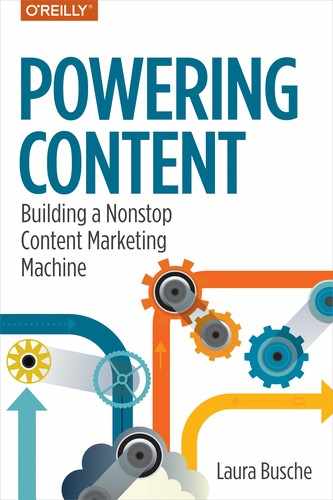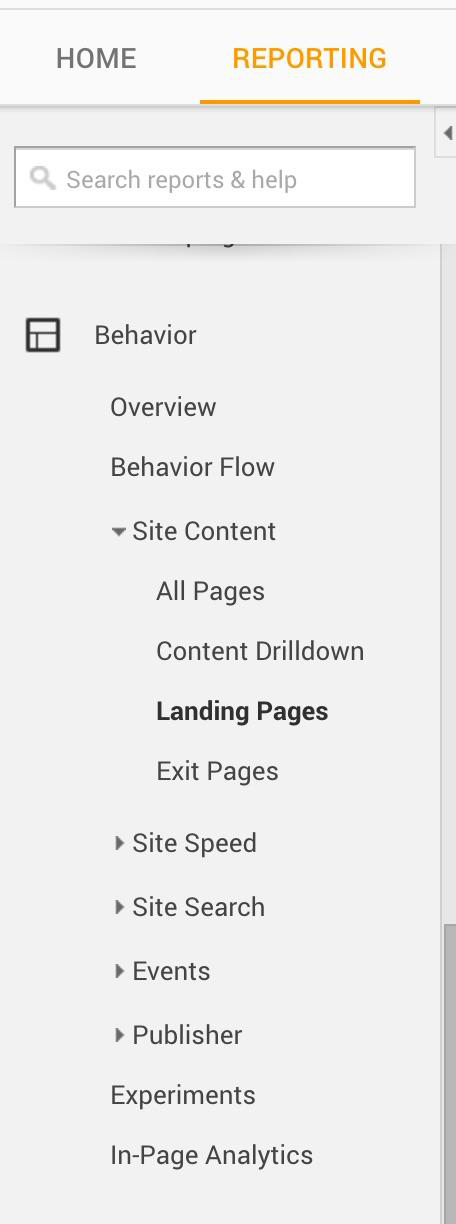Chapter 2. Setting Content Goals
Investing time and resources into content production without knowing why you are doing it puts you in danger of wasting time and coming away dissatisfied. So, I invite you to answer the following question: why are you investing so much in creating this immense catalog, in reaching out to people, in designing a message? What is it about content that draws your attention, and what are you trying to achieve with it? This answer is so crucial that I suggest making a note of it in the space that follows:
|
Traffic for traffic’s sake is vanity. Traffic to sustain an ad program, acquire new users, nurture leads, improve domain or page authority for Search Engine Optimization (SEO), or generate signups? Now those are traffic-related goals I can stand behind. If we fail to articulate clearly why we are prioritizing traffic, our production process can lack clarity and direction.
After you learn about the hundreds of metrics available to track content success these days, you will quickly understand what you have gotten yourself into. You will soon be celebrating (and crying over) pageviews, and signups, and organic traffic, and time on site, and social shares—and, assuming your resources are limited, it will all make you feel absolutely confused.
On a tactical level, it can be difficult to prioritize both social content shares and organic search traffic. To focus on the first, you would need to concentrate on producing content that appeals to a social crowd: pieces with a sense of urgency and virality. To focus a more invested reader, you would need to think about headlines and text that position your brand as the go-to, most reputable source for specific topics. We discuss more about your audience’s level of involvement in Chapter 3. For now, it is important to understand that you can decide to wear both of these hats: working to capture social shares and search-engine traffic simultaneously. However, it is often true that “the man who chases two rabbits, catches neither,” in the wise words of Confucius.
Put simply, prioritizing one over the other does not mean that these metrics are mutually exclusive, it is just recognizing that your time is limited. Some of these metrics will pull your everyday work in different directions. There is a tradeoff involved in absolutely everything you put on your plate.
Metrics Versus Goals
It is crucial to understand that metrics are not business goals. Metrics are just raw indicators, whereas goals speak about the direction in which you want to take your product. For content to be meaningful, the key performance indicators (KPIs) you are tracking must truly move the needle and push your business forward. Defining “pageviews” as a content goal, for example, does not tell the complete story. Instead, pageviews could be a KPI related to the larger goal of increasing site traffic.
We want to increase the blog’s visitor-to-signup conversion rate so that the company can reach its user acquisition goals.
Or,
We want to increase the blog’s pageviews so that the company can increase its ad revenue.
Or,
We want to increase our social following so that the company can widen its reach in upcoming product launches and feature rollouts.
To articulate content goals that are truly valued and understood by other stakeholders (think upper management, your cofounder, or investors), use the following template:
We want to improve X (KPI) so that the company can achieve/reach Y (goal).
As you can imagine, this means that one or more KPIs can relate to a single goal. Let us look at some common content goals that might help you define your own. As you read through these, consider how different goals might be applicable in different time periods. As I explained earlier, nobody is expecting your goals to remain the same forever. Quite on the contrary, these goals must be adjusted to reflect the most current business realities.
Common Types of Content Goals
Table 2-1 looks at some of the most popular content goals as they relate to specific performance metrics. For every type of goal we will define, there are associated metrics to gauge whether we’re moving in the right direction.
| Sample goal | Related metrics |
|---|---|
| Goals related to traffic | Pageviews (unique and total) Sessions (unique and total) Visitors (unique and total) New visitors |
| Goals related to SEO | Organic traffic (pageviews or sessions) Page or domain authority improvements Changing positions in particular (focus) keywords Number and quality of inbound links |
| Goals related to engagement | Time on page/time on site Pages per session Referral traffic Content shares |
| Goals related to signups | Signups attributed to content pieces (funnel) Content-to-signup conversion rate (funnel) |
| Goals related to revenue | Total revenue attributed to content pieces (funnel) Average transaction size attributed to content pieces Content-to-purchase conversion rate (funnel) |
The metrics outlined in Table 2-1 and the goals they help us track all contribute to business growth by enabling different stages of the customer’s journey with us. When you look at goals related to traffic and SEO, the objective is to get more users to learn about the brand in the first place. When content fosters engagement, it is helping maintain a user’s relationship with the brand and encouraging referral. When your content pieces lead to signups or purchases, they are intervening directly in the heart of your business model.
Because each of these metrics helps you to understand the role your content plays from a different perspective, it makes sense to have tracking in place for as many as you can. However, you should focus on improving a manageable subgroup of metrics that correspond with specific goals. Put simply: track everything all the time, but work on optimizing a few indicators at a time.
Yes, it is true that many of these metrics (and their goals) are interrelated. Time spent on page (an engagement indicator) is closely related to a reader/viewer’s desire to refer another visitor, which in turn affects traffic. If you are excited about the content you are interacting with, there is a higher chance you will share it with others. Similarly, many metrics intervene to improve the chances your content is found in search engine results. A higher number of signups attributed to content will most likely affect the amount of purchases also attributed to content. Your content hub’s overall health is a result of a positive performance in several of these metrics—not just one.
However, it is also true that there is only so much we can achieve when we focus on everything at the same time. In one quarter, for example, you could emphasize signups, and work hard at improving your content pieces’ signup conversion rate. The next quarter, you might be interested in improving your site’s search engine positions. In that case, you would begin focusing on link building and the quality of the interactions your users have with the content after they land. Both play a role in SEO.
Tackling specific goals improves your chances of actually enacting change—and that is why we are looking at them separately in the next few pages. Prioritization is the key to clarity, in content, business, and beyond. We will discuss tracking, measuring, and reporting later in this chapter. For now, let us look at how each of these different types of content goals affects business.
Exercise: Figuring Out Your Content’s ROI
I will be the first to admit that the term ROI sounds slightly intimidating. There is something about it that seems overtly financial, obscure, perhaps even uninspiring. However, it is only when we connect all the effort we invest to actual results that we understand the impact of the content we are creating. When we know what those results are, we can easily recognize the type of content that is most valuable to us in order to create more of it.
It is incredibly enlightening to be able to share what role content has played in propelling your business. That is why I created this exercise: to help you visualize some of the direct returns content can generate.
Connect your main content hub (blog, resource center, or however you have named it) to Google Analytics (GA) if you have not already done so. It is important to understand that the entire idea of this exercise is to let GA know which goals are important to you so that it can report on how individual content pieces are getting you closer to such objectives.
In the pane on the left, click Conversions. Next, click Goals, and then click Overview. If you are doing this for the first time, you should see a screen similar to Figure 2-1. Click “Set up goals.”
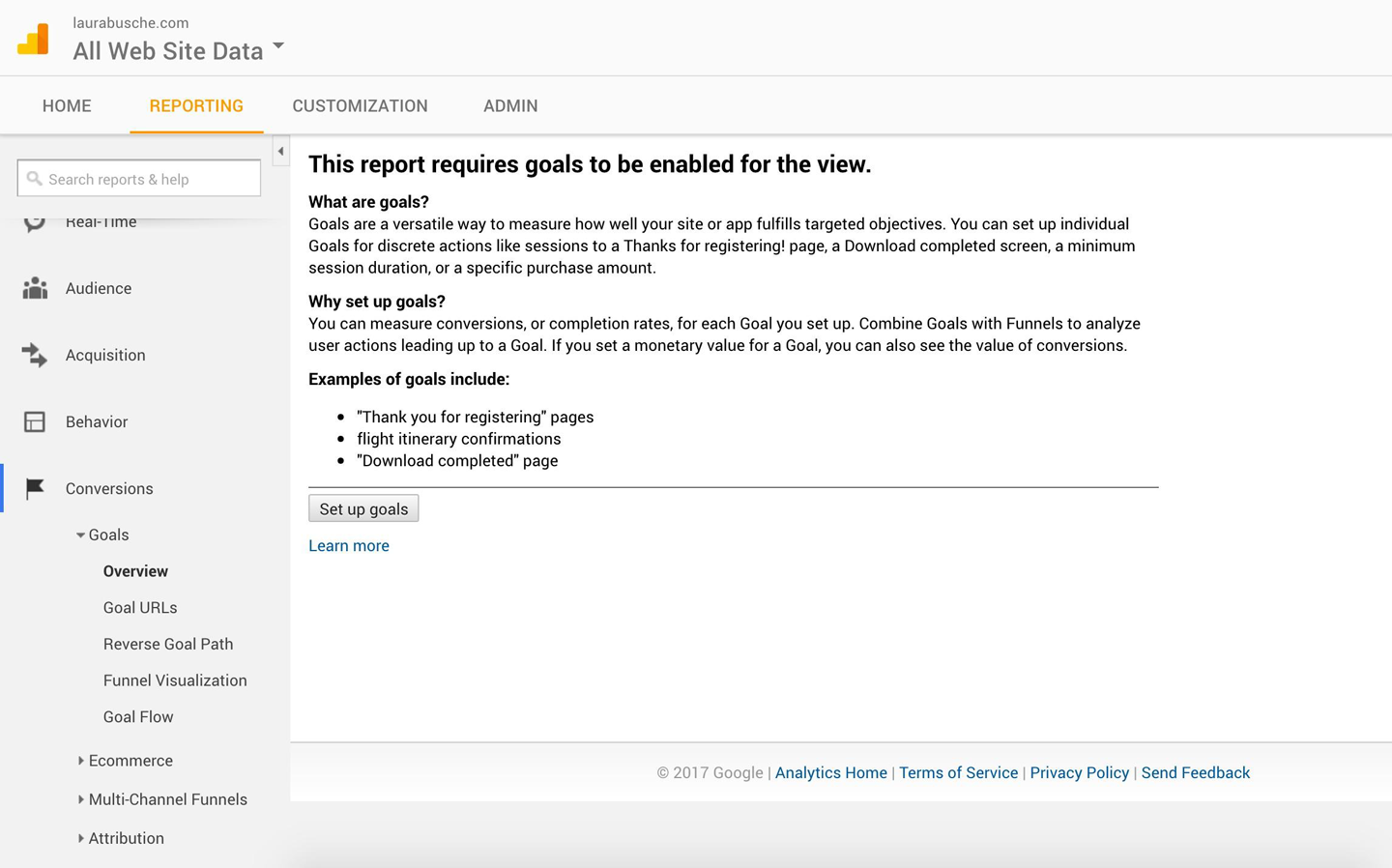
Figure 2-1. Setting up goals in Google Analytics
As Google explains, we will set up an objective that our content should help us achieve. If you have decided, for example, that articles should help generate revenue (as a goal), that is the connection we will be defining in the next few steps.
GA offers a few basic templates to help you set up this goal easily. For the sake of this exercise, select the “Make a payment” template, as shown in Figure 2-2, and then click Continue.
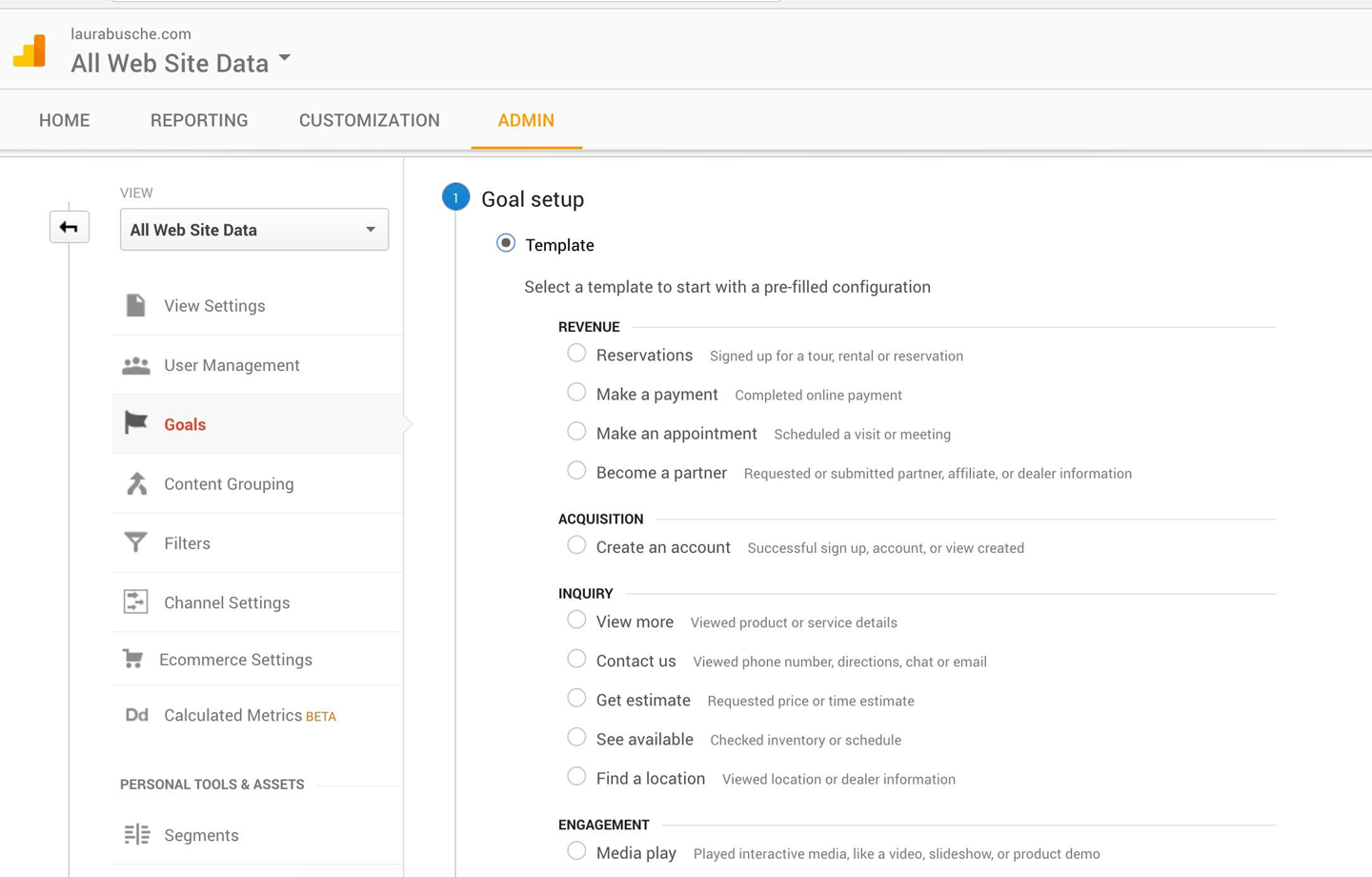
Figure 2-2. Selecting a goal template in GA
Choose the “Destination” goal type and name your goal so that you can recognize it later. As you become more familiar with the way this feature works, you might want to experiment with other types like Duration. If you are creating content to extend your visitors’ time on site, Duration could be a useful way to set up a goal. For instance, GA could count every user who remained on the site more than 10 minutes as a completed goal.
Let GA know which page your users will see after they complete a purchase. GA will check if your visitors have reached that page to determine whether a purchase has occurred. Moving along with our example, in the Destination goal type text box, I have typed “thanks-for-your-purchase.html,” as demonstrated in Figure 2-3.
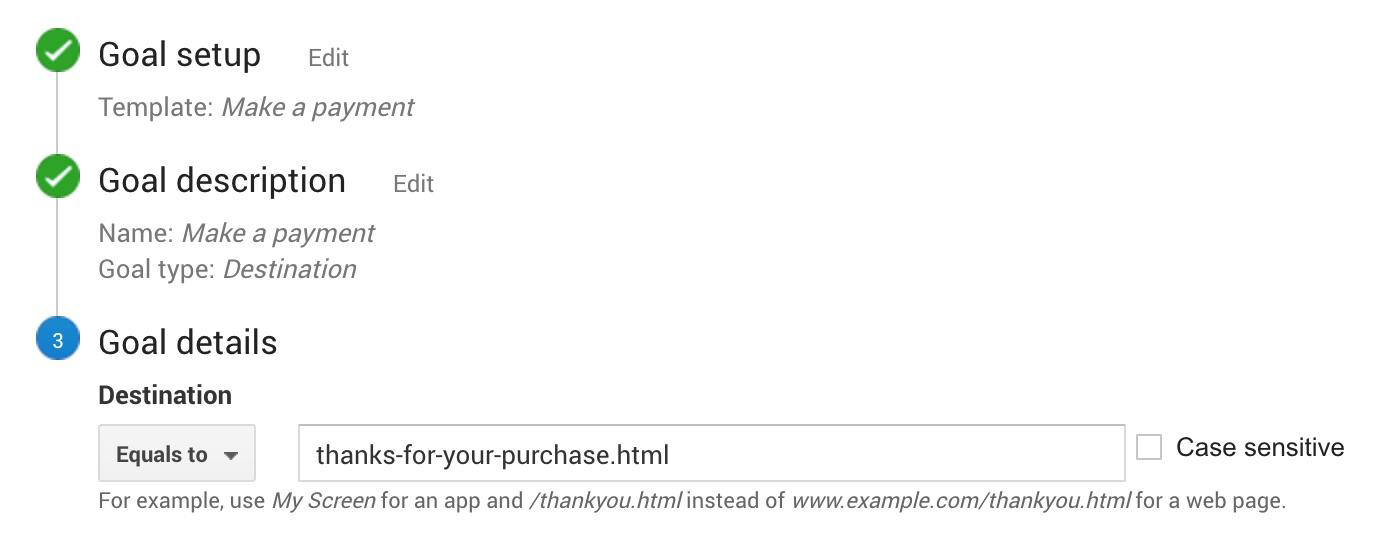
Figure 2-3. Specifying goal details in GA
Click Done.
Allow some time to pass, because tracking applies only to the data you collect after the goal has been created. Before you actually begin looking at the return your content has generated (in terms of goals completed) you want to collect a substantial amount of data. One month should give you enough information to begin.
Click the Reporting tab, and then, in the pane on the left, click Behavior → Site Content → Landing Pages, as depicted in Figure 2-4.
A table appears, showing different performance metrics for each of the pages on your site. In the Conversion column, select the goal you have just created. It should appear as a new column in the table.
You are all set! What you are seeing is the number of goals completed during your users’ sessions after they land on your content pages. “Landing” is just another way of saying “entering the site.”
You can create a shortcut for this report (see Figure 2-5) or add it to your dashboard by clicking either of those options at the top. You also can click the Email option and get a weekly report sent to your inbox—something I have found to be incredibly useful! View, export, or share the custom report every time you need to.
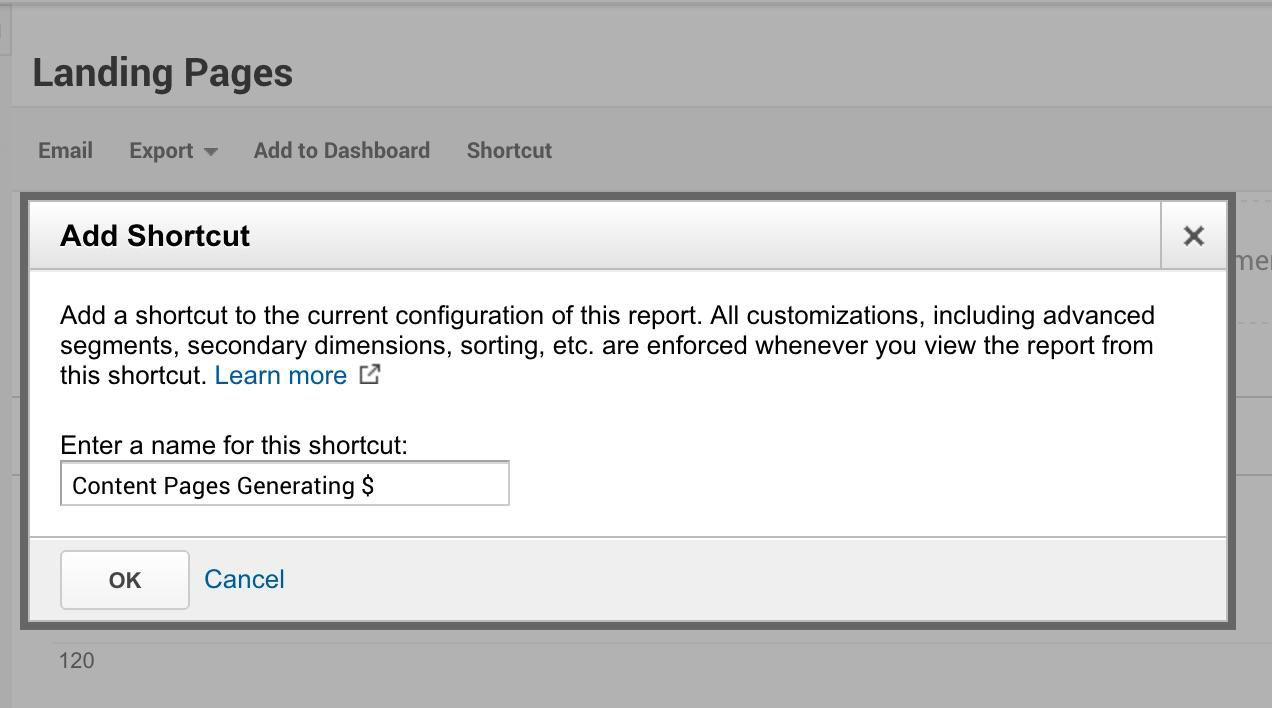
Figure 2-5. Adding shortcuts to GA reports
Stay on top of these numbers and keep track of the pieces that perform best in terms of the goals you have decided to target. I like to think of this shortlist as my “Most Valuable Content,” or MVC. Each of these pieces contributes to your objectives much in the same way the Most Valuable Players (MVPs) score for their teams. In Chapter 12, we review strategies to extend the success of such top-performing content.
Note
If you want to set up a revenue goal where you see the exact amount of money visitors to your site spent after landing on a content page, you can enable ecommerce tracking for GA. This integration will send all the purchase and product information to GA in real time. There are plug-ins that will do this for you in every major Content Management System (CMS) that has an ecommerce module, including WordPress (Woocommerce), Drupal (Ubercart), Shopify, and many others.
Optimizing for Conversion
Every goal is somehow, directly or indirectly, linked to conversion: guiding your audience down a desired action path.
What that path looks like and where it leads is entirely up to you and your team. For some brands, content influences conversion because it stimulates signups. For others, content is directly related to products that audiences can purchase. Even those that invest in content for its SEO value are expecting to improve their position in order to pitch something else. There is also a growing group of brands that actually monetize through content, so it becomes that “something else.” If there is any hope of bringing in long-term traffic, at the very least you will need to convert content readers into email or social subscribers. The same is true for podcast listeners or video channel subscribers. Therefore, even if you are purely generating ad revenue, conversion is inevitably tied to the way you produce, distribute, and optimize content.
Let’s pause on that last element for a bit: optimization. Like every other impact metric, you can optimize your content’s conversion rate. In fact, Conversion Rate Optimization (CRO) has become one of the primary concerns of content managers. Unlike every other impact metric, however, your conversion rate has the potential to move your business’s needle in the right direction.
You can optimize virtually any content format for conversion—not just articles. Every one of the formats listed in Table 2-2 could be a potential hook for a desired action path. It is slightly more difficult when the channel you are using does not allow direct linking. Examples of this are Instagram and Snapchat. However, marketers always come up with ways to drive conversion even in those scenarios. Solutions like Like2Buy (like2b.uy), for example, allow brands to turn their formerly link-less Instagram feeds into actual shops. In Chapter 7 we will discuss the nuances of each of these formats, as well as the ideal type content to use them with.
Table 2-2 looks at some examples of the conversion possibilities that popular content formats can offer.
| Content format | Sample call-to-action placement |
|---|---|
| Articles | Embedded/pop-up opt-in box |
| Presentations | Link within a slide |
| Podcasts | Special shortened link said out loud |
| Video | Link inside the video’s information box |
| Quizzes | Link at the end of the quiz |
| Webinars | Link inside a post-webinar email recap |
| Ebooks | Link inside one of the pages |
| Email newsletters | Link somewhere inside the email |
| Landing pages | Embedded opt-in boxes throughout |
That last content format, the landing page, is grossly disregarded by many content managers. Many brands select a blog (or some variant) as a content hub for their catalog. That makes sense and is perfectly fine. What baffles me is that we believe it is possible to succeed focusing solely on a blog while abandoning other content areas of our site. When you begin seeing content as a cross-functional business asset, this makes even less sense.
Landing pages are ideal conversion points by design. They are incredibly useful at highlighting calls to action, the basic triggers that send visitors down your desired conversion path. Carefully crafted, they can even support your blog’s performance by providing a place to persuade your audience to sign up. They can build excitement and collect interest for upcoming ebooks, webinars, and live presentations. As traffic destinations, they provide space to serve other pieces of content (like articles) and extend your visitors’ relationship with the brand.
Certain articles can also become valuable landing pages insofar as they provide a clear call to action. Actually, the line between landing pages and articles is becoming more and more blurred. Text-based articles are being transformed to look like small landing pages! They include bold, graphically appealing sections and specialized gated content opt-ins.
Making Your Content Remarkably Persuasive
As you explore the world of CRO, it is useful to attend to Dr. Robert Cialdini’s six principles of persuasion: reciprocity, commitment and consistency, social proof, liking, authority, and scarcity. Reciprocity explains why phrases like “I owe you one” exist. As long as you are providing me something valuable, it is only human of me to try to repay you. There is a give and there is an ask—and this is true both for audience members as well as any partner that you are trying to pitch. There are also, of course, actions that are truly selfless and public-spirited. I will assume, however, for the sake of our discussion, that you are trying to improve the return on the investment you are making.
Social proof is another powerful trigger for conversion, especially when you are dealing with content. Highlighting the impact that a certain product or service has had for others is a way to make the case that it might do the same for you. This principle can come to life in content when you establish how popular a product is before you link to it, show how many downloads a gated piece has had, or somehow feature what others have been able to accomplish with what you are pitching. Here is what that looks like:
500,000 content managers are already using this planner to schedule their posts.
Consistency can also prove an important tool for persuasion. Essentially, this principle points to the fact that we do not like to appear incoherent in our actions. If we have said or done something in the past, we should be consistent with our future actions. Not betraying yourself is key. When trying to call your audience to action, let them know that the next step you are proposing is only logical based on what they have learned/done recently.
Now that you’ve spent time learning the basics of SEO, download this guide to on-page optimization.
As intuitive as it sounds, human beings are also more prone to persuasion when addressed by someone they like. The principle of liking can also apply to your content-driven conversion tactics. A clear example is your audience’s desire to trust the quality of, for example, a downloadable file because they have been interacting with your brand on social media. They have grown to like and believe you. A responsibly managed social presence can lay the foundation for effective persuasion via likability—for years to come.
All else being equal, we tend to trust messengers with a certain level of authority. This principle establishes that a person or brand’s reliability markers are important triggers for persuasion. In many occasions, we will believe what we’re being told because of who is doing the telling. Think about your own experiences searching for advice: have you preferred to get it from experts? So does your audience.
To employ authority when asking for a follow-up action, you could use a message like:
We rounded up the best productivity tips from top experts in the field, and you can download them when you sign up for free below.
The last of Dr. Cialdini’s six principles is scarcity. What you are offering up won’t be available forever, or it won’t be available for an unlimited number of people. In those scenarios, human beings often read high-quality signals: something tells them this item is valuable because it is scarce. When creating calls to action stemming from a content experience, add a sense of scarcity by saying something like:
This registration/download will only be available for a limited time.
Sign up for our upcoming webinar. Seats are limited–reserve your spot now!
These six principles were the product of more than 30 years of scientific research and analysis. They are the underlying mechanisms in place whenever you are trying to persuade someone to act a certain way. If our content pieces are to become compelling conversion triggers, we need to use these signals as much as we can.
Tactics to Optimize Content for Conversion
Throughout the next few pages, I will focus on three specific tactics to foster conversion with your content pieces: product links, gated content, and content as product. You can apply the persuasion principles in all four of these tactics.
Product Links
This is perhaps the most basic form of integrating a call to action. You are reading or viewing something on a page when, suddenly, there it is: a link to a product that has everything to do with what you are learning. Product embeds can turn a merely educational content piece into a powerful conversion point.
Successful product links feel natural, relevant, and unobtrusive. You do not want to interrupt the content consumption experience with a sales pitch, but you do not want to be so subtle that users cannot see them. Certain content types are better equipped to contain these links in a way that they feel natural and appropriate:
- Hands-on tutorials
- These demonstrate how audience members can create something valuable to them by pursuing the linked product(s).
- Tool roundups
- These allow your audience to hear about great resources.
- Lessons learned
- This type of content piece can link to specific products that facilitated the learning.
- New feature announcements
- With these, you make it necessary to link back to a product.
- Multimedia
- Multimedia pieces show the actual production process behind the items linked.
If you are in fact inserting product links within your content, ensure that you have a way to track all subsequent actions whenever possible. GA makes it easy to connect certain content landing pages with ecommerce or other types of conversion goals. You just need to define what those goals are and connect your site with GA’s commerce tracking. As you move further along this path, you will learn that what cannot be tracked cannot be optimized.
Gated Content
You might have heard or read this term being tossed around recently. Gated content is literally withholding content pieces until the user completes a specific, desirable action. Instead of seeing this as a hostage situation, look at it as a reward. The user converts and, aside from all the benefits that action represents, he also gets a highly valuable asset.
Let’s stop there for a second. Creating a highly valuable asset is the key behind any successful gated-content initiative. This file, resource, or benefit needs to correspond with your intended persona’s needs. No matter what industry you are in, these are some of the traits of successful gated content pieces:
- Exclusivity
- This reveals information otherwise not readily available. There is no real point in gating something that isn’t incredibly attractive to your user. In line with the scarcity principle, we must ensure that the gated-content piece isn’t easily available for free in our own or our competitors’ content catalog. Always remember that, in gating, you are hiding something that someone must want to find. That “wanting” drives all subsequent conversion actions.
- Relevance
- This responds to a specific reader persona’s needs or wants. It is often said that the best predictor of future behavior is past behavior. A simple way to ensure your gated piece feels relevant is to make it particularly pertinent to the content a user has already shown interest in. In other words, “because you loved X, you might also be interested in reading Y.” These kinds of prompts remind the user that there is merit in looking at the new content based on his previous behavior. You might remember this idea from the principles of commitment and consistency. I call this the “mind-reading” effect, and it can prevent your content gate from feeling spammy or overtly promotional.
- Originality
- This contains original ideas, data, or advice. Perhaps you have collected primary data on an important topic or have a unique analysis to share. These are both examples of content that you would not easily find anywhere else because your brand generated it.
- Advancement
- This promises to make you more productive, able, or competent than you were. This type of gated content adds value by improving the user’s abilities via recommendations or an educational approach. In-depth tutorials also rely on this idea of promising advancement.
- Convenience
- This compiles information that is readily available but not in a single document. These pieces put together massive amounts of data that would otherwise be very difficult to find.
- Urgency
- This contains information that viewers should access in order to prevent something else from happening or make something happen by a certain date. Perhaps a special event is coming up and this piece can prepare your audience properly.
- Support
- Boilerplates, checklists, templates, and other assets to give your audience a head start in doing something. Gated-content pieces that offer support also benefit from being particularly relevant: you are better off if the templates being offered correspond with the content the user has already been seeing and enjoying. Again, the “mind-reading” effect at play.
Content as Product
As discussed earlier, content can be a product in and of itself. Whenever this is the case, make use of Cialdini’s six persuasion principles. The central challenge is finding a way to communicate that your content is so valuable that it is worth x amount of dollars. More so than the gated pieces we just discussed, pitching paid ones will require thinking about content as a standalone, marketable product.
With so much high-quality, free content available online, you will need to design a product that does one or more of the following:
Explains something more thoroughly than other content
Compiles information in a handy, well-designed format
Contains exclusive or premium information not available anywhere else
Deals with a topic so complex that there isn’t much content available (for free or otherwise)
Adds unique value that far surpasses what is available for free
Like it or not, your audience will always compare you against alternatives. “Free” is one of them—a very strong one—but so are other paid content pieces competing with yours for attention. Even in selecting this book, you likely looked at various others that could support you in your content production journey. I would like to invite you to ask yourself: what made you buy it? What you are holding in your hands, or tablet/phone/computer, is a content product that promised to assist you in a task that was vital to you. Why did you choose this knowing about all the available free content online? Did your answer match one of the aforementioned purchase triggers?
Are you looking for inspiration in creating paid content? Be sure to check out these valuable sources:
Top-selling book rankings (Amazon)
Top-selling podcasts (Acast, Audible)
Top-selling video channels (YouTube)
Top-selling mobile apps (iTunes/Google Play charts)
Top membership sites
As you review these, look at the comments users leave behind to understand their motivations, intentions, deceptions, and victories. What drove them to subscribe or pay? What do they particularly like about this paid content product? What are they not too excited about? What features/updates are they requesting? These questions can point you in the right direction as you build your own paid content product.
Test, Test, Test
Testing is the only way in which you can be certain about the type of call to action, gated content, or content product that best suits your audience. A/B testing in particular offers the opportunity to evaluate two alternative versions of a certain text, image, or design. After you have defined which variations you want to test, it is a matter of serving each of them to a percentage of your audience to see which one is more competitive.
Competitive in terms of what? You decide. You could declare a winning version based on how many signups, clicks, or purchases it generates, for example. You define what success looks like for your brand. Figure 2-6 shows Google’s (free) Content Experiments tool, which makes this process simple.
There are also paid standalone tools like Optimizely as well as CMS-specific plug-ins that make A/B testing incredibly easy. Many platforms that provide gated-content solutions also offer testing capabilities. SumoMe and Leadpages both allow you to create split tests, just to name a few.
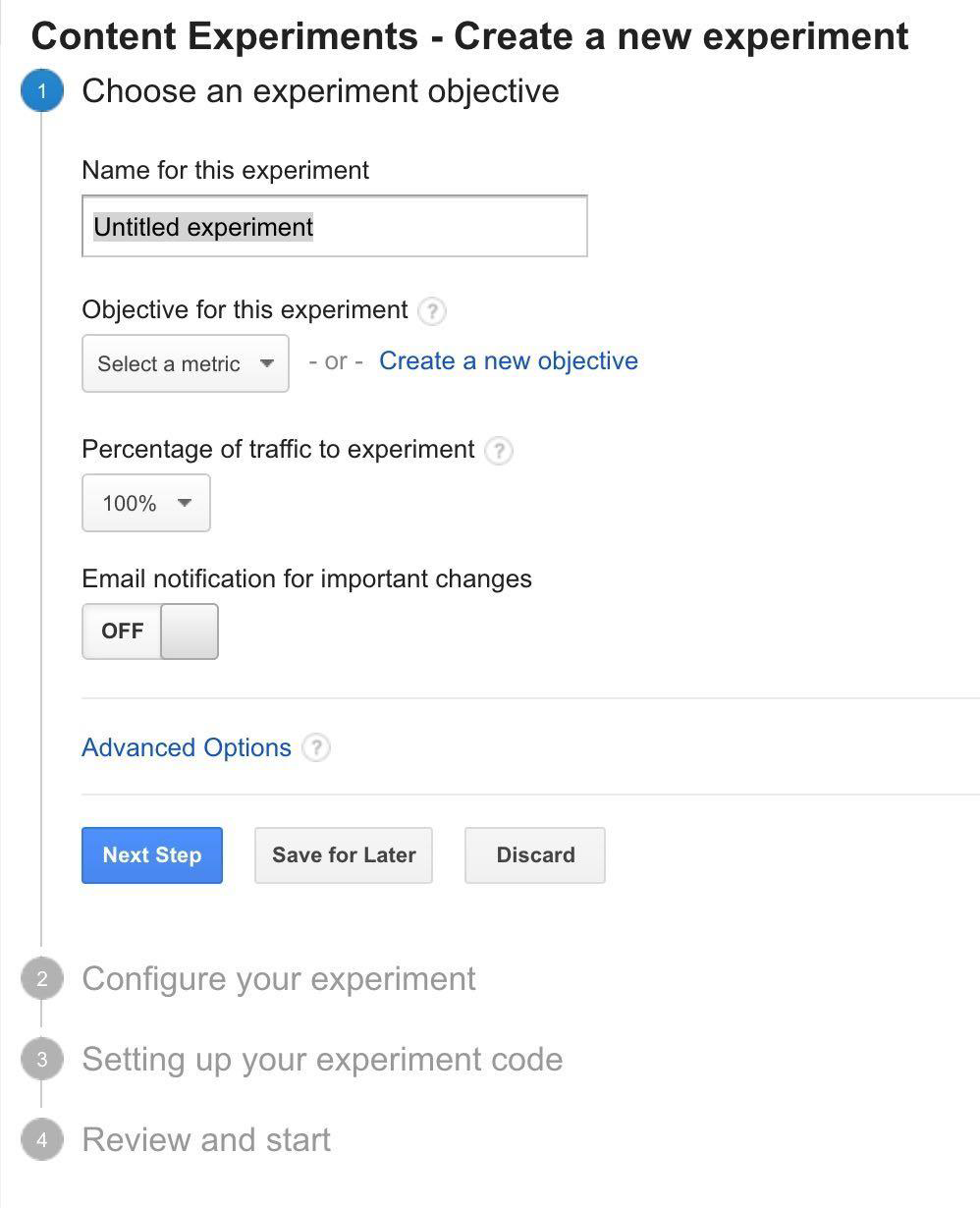
Figure 2-6. Creating a new content experiment in GA
Reporting and Learning
My first big “Aha!” moment as a creator came when I realized that successful content has less to do with art than it does with data crunching. Let me be clear: I am, first and foremost, a writer. I get it. We create, innovate, imagine, work our magic, and shatter expectations. I am not saying we all need to become scientists now and forego the storytelling skills that brought us here. What I am saying is that content managers are not in the business of churning out pieces that look good—we are here to figure out what works well, and then consistently do more of that.
To get the groundbreaking content results I wanted, I had to reconcile with numbers first. Maybe you do, too. The qualitative side of our brain says numbers are no fun, that they are bound to ruin the party, so let us just ignore them. But when numbers are the only way to ensure that the party goes on, trust me, you want to invite them in. You want to make those numbers part of your everyday, like the morning coffee or evening news. Data analysis needs to make it to your agenda and stay there.
Believe it or not, there are many exhilarating moments when you integrate quantitative analysis to your content management routine—for example, the day you finally figured out why that metric was dropping; the day you had alternative headlines compete and found a statistically significant winner; that one time you cracked the code to infinitely many content shares. After you get the hang of it, there is less guessing and more experimenting. Your hunches turn into hypotheses, and your goals into trackable performance indicators.
Perhaps most important, data enables you to communicate the value of content to your team and every stakeholder involved. You can report on how content is directly affecting the bottom line. You can express the return on content investment in compelling numbers followed by even more compelling words. I am not going to lie: data and reporting are the road to credibility—especially when no one else seems to understand what you are doing.
As a last note before we dive deep into reporting, I will say that making your blog the main content channel can prove incredibly valuable for the purposes of testing and gathering analytics. Because you are hosting that content hub on your site, there is complete control over what is being tracked in the background. You can easily integrate a robust analytics package like GA or Kissmetrics. There is complete transparency about what is happening in real time. There is no limit to what you can analyze, and that is something third-party content platforms will rarely provide. As you read the upcoming paragraphs, keep in mind that they are illustrating what is possible when you have that level of control. Other platforms will provide reporting and metrics, but you will need to adjust to what they have to offer.
All that being said, let’s put a plan in place to ensure that you can effectively report on your content strategy’s performance. I will walk you through it in seven steps:
Align metrics with goals and prioritize.
Ensure that tracking is in place.
Build out dynamic reports.
Collect data periodically.
Analyze data periodically.
Evaluate the most effective course of action.
Share lessons learned.
Step 1: Align Metrics with Goals and Prioritize
To complete this step, we need to go back to the content goals we set out to meet at the beginning of the chapter. Let’s review that by taking a look at Table 2-3.
| Sample goal | Related metrics |
|---|---|
| Goals related to SEO | Organic traffic (pageviews or sessions) Page or domain authority improvements Focus keyword position changes Number and quality of inbound links |
| Goals related to signups | Signups attributed to content pieces (funnel) Content-to-signup conversion rate (funnel) |
| Goals related to engagement | Time on page/time on site Pages per session Referral traffic Content shares |
| Goals related to revenue | Total revenue attributed to content pieces (funnel) Average transaction size attributed to content pieces Content-to-purchase conversion rate (funnel) |
| Goals related to traffic | Pageviews (unique and total) Sessions (unique and total) Visitors (unique and total) New visitors |
Most of these metrics are straightforward, cumulative, and obtainable from your analytics package out of the box. Others, like conversion rates and signup/revenue attributions, you’ll need to build in to your analytics package by designing funnels. A funnel is just a course of action that you lay out so that your analytics tool can track whether visitors are following certain steps. Then, the tool will be able to attribute goals like signups and revenue back to the content step in your funnel. That is how you will be able to figure out what a content piece is worth to you in dollars or number of signups. With the web analytics features available today, you can assess the return on your content investment in terms of its direct impact in your business’s bottom line, if you so desire.
Because everything in life and business is a tradeoff, I would urge you to focus on improving two or three key metrics at a time. Anything beyond that will become much less manageable and might lead to frustration. Attempt to affect fewer indicators with more strength. For reference, these are the three indicators that I have tracked most frequently during my career:
Sessions
Pageviews
Assisted conversions (signups, purchases, etc.)
Step 2: Ensure That Tracking Is in Place
Select a web analytics solution that matches your needs and install it on your content site. For the sake of convenience, I will be referring to GA, which is available for free. All you have to do is add a tracking code snippet to the <head> section of all the pages you want to analyze. Because most sites contain multiple pages, there are ways to add that code to a general template only once. That template, in turn, affects what is shown in many pages. If you are using a CMS like WordPress or Drupal, there are many different free plug-ins that will handle that code’s insertion in all of your pages.
As explained earlier, most metrics will be immediately accessible, but some will require designing and setting up funnels. Imagine a series of steps that users go through from the moment they interact with your content to the point at which they complete the intended action. Make sure that you have configured the analytics tool so that the right data is being collected.
Step 3: Build Out Dynamic Reports
GA is user-friendly, allowing you to navigate your way around the interface to collect the various numbers for the metrics you are tracking. However, a more efficient way to handle your data collection and analysis is to build out dynamic reports that pull certain numbers within a single view. You then can go back every so many days and download a PDF or spreadsheet with every data point you need. This not only facilitates your analysis, but also creates a template that any other team member can go back to in order to get a quick glimpse at what is happening with content.
Step 4: Collect Data Periodically (Revise It Daily)
Remember to take a quick look at your key numbers daily. The easiest way to incorporate that practice to your routine is to come up with a list of benchmarks or rules of thumb: find the daily averages for your most important metrics and use those to quickly spot performance issues. This review won’t require detailed reporting, but is essential to your ability to course-correct in real time.
Decide how often you want to download a dataset for analysis. This will be the same time period you will use for your content reporting, so you can think in terms of weeks, months, or quarters.
Step 5: Analyze and Report on Data Periodically
Using the dataset you download periodically (you decide how often), describe what has happened using your key metrics prioritized in step 1. Has performance improved or dropped for each of them?
After you have narrowed down the basic wins and losses of the period, proceed to go deeper to understand what might have caused them. If total sessions went up by 30 percent, you want to know what drove that increase. If your attributed signups suddenly dropped by 80 percent, you want to spot the issue and bring it up in your report. In finding possible causes for performance changes, remember that not everything is internal. There are also external changes that can affect your content’s indicators. Major search or social algorithm changes, for example, play a huge role in traffic and engagement totals.
Step 6: Evaluate the Most Effective Course of Action
It isn’t enough to communicate the status quo. Effective content reporting suggests a clear, forward-looking path for continuous improvement. What this means is that your analysis must include recommendations on tactics that need to be continued and discontinued. Although everyone is interested in learning about problems, content management is about finding solutions. You will constantly find yourself in puzzle-solving mode. Try to determine what you can do about a certain drop, or how to replicate a given spike.
